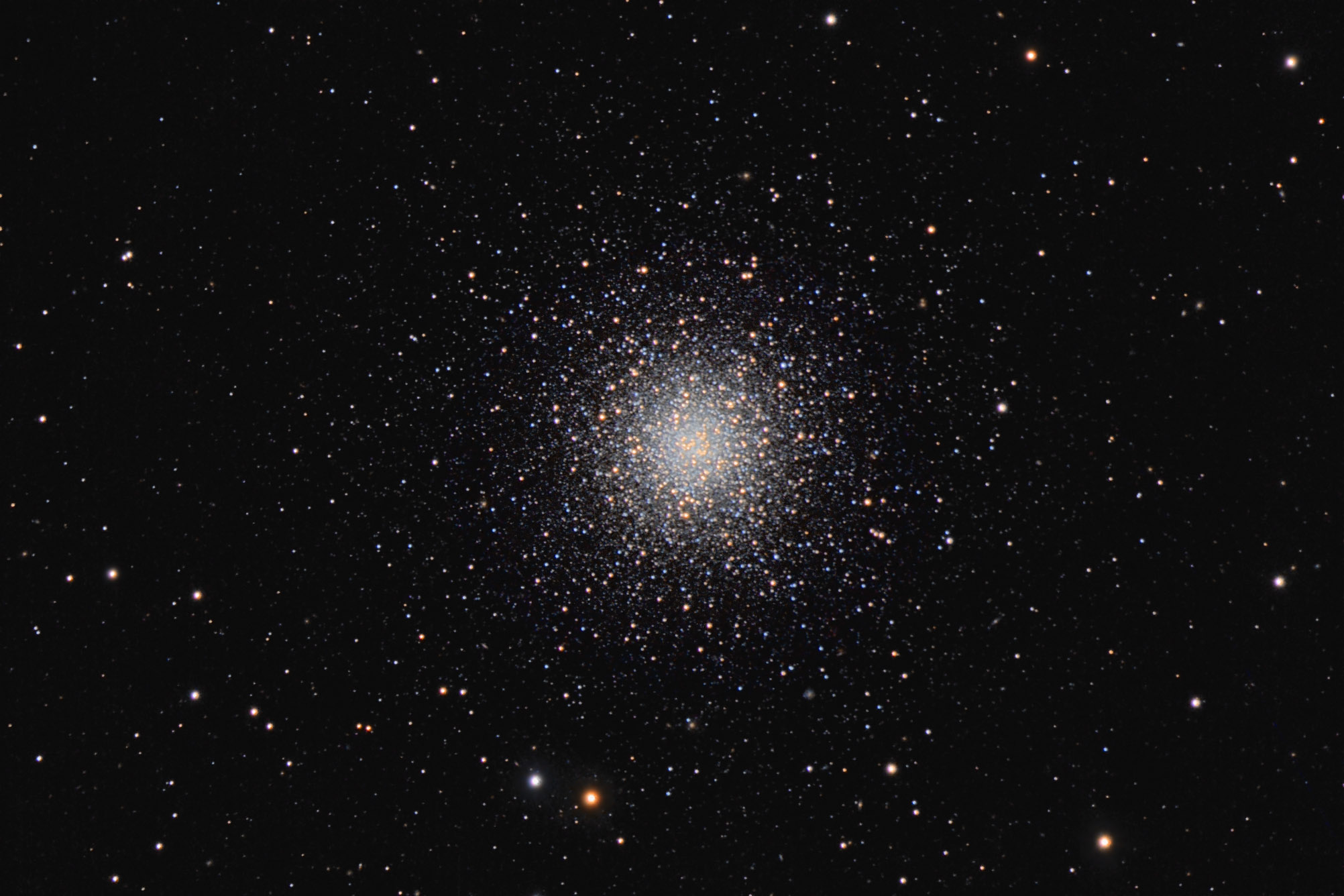| Description | Images |
Object name: M053Designation(s): M053, M53 is a globular star cluster in Coma Berenices hiding among all the area's galaxies. It is a rather unusual globular in that it is rather old at over 12 billion years. Since most, if not all, of a globular cluster's stars formed when it did only yellow to red stars, should remain. Its blue stars having died billions of years ago. Yet it is full of blue stars of a type known as blue stragglers. In most globulars, some of these exist, usually near the core where star density is high. It is thought due to the extremely high star density some collide, merge and become massive hot blue stars -- blue stragglers. But in the case of M53, these stars can be found throughout the globular rather than concentrated in the core. One possible explanation is that these blue stragglers are due to the cluster having a high density of double stars in which the more massive star's gravity pulls material from the companion growing to the mass needed for a blue star. Also, it is chock full of red giant's. Both are quite obvious in my image with the yellow, orange and red giants scattered about same as the fainter but more numerous blue stragglers. Again the number of these giant stars is higher than expected. Probably due to blue stragglers running out of fuel and expanding into red giants. This would explain their similar distribution. Though this is my idea, I found little on this. Related Designation(s):2MASS J13125521+1810103, GALEXMSC J131255.08+181006.6 , LEDA 2802648, M053, MESSIER 053, NGC 5024, [LM2010] 21, |
